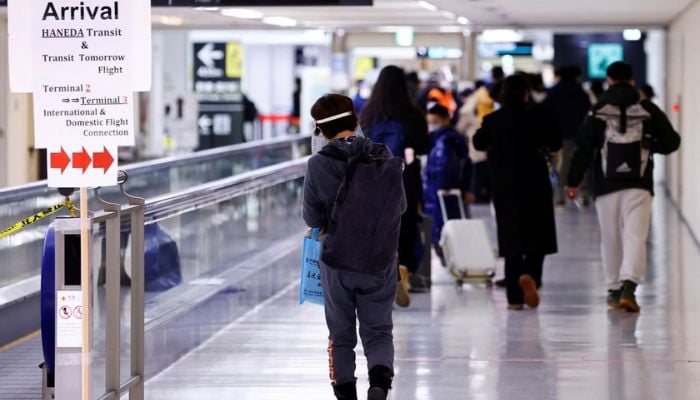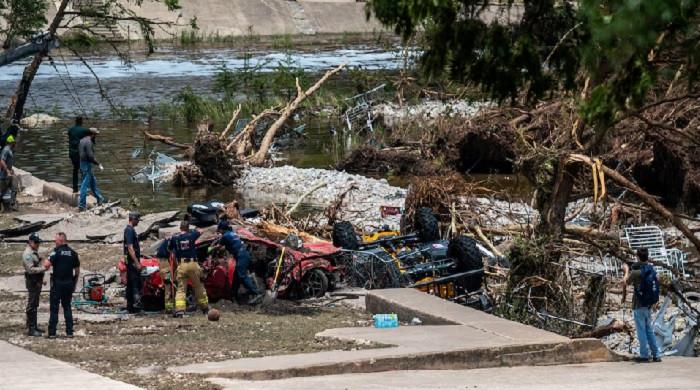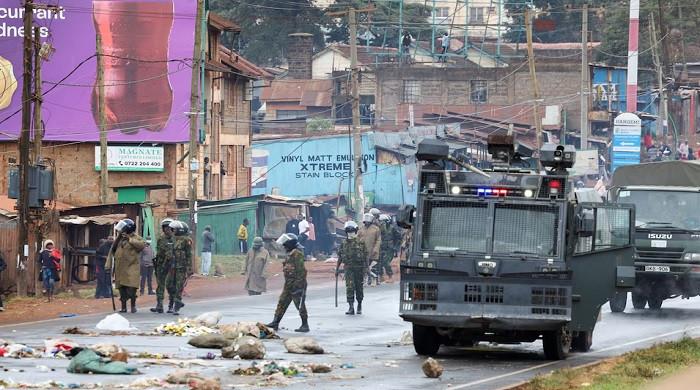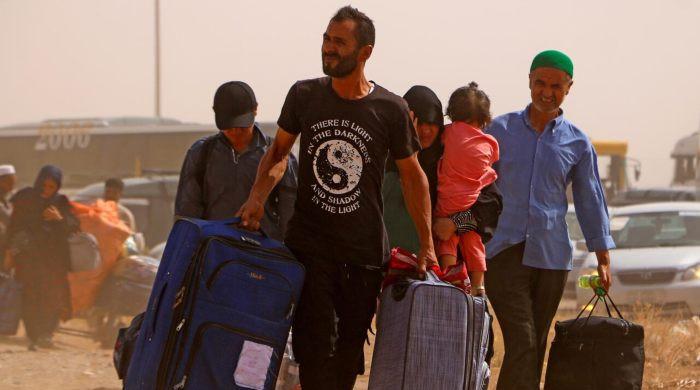Air travel recovers in China amid COVID infection worries
China re-opened its borders on Jan 8 after having abruptly abandoned in December a strict anti-virus regime
January 14, 2023

- Air passenger volumes at 63% of 2019 levels.
- Surge in infections feared as millions head to home towns.
- Cinema tickets sales expected to surge.
SHANGHAI: People in China are resuming travel ahead of the Lunar New Year, despite worries about infections after Beijing dropped COVID-19 curbs last month, with air passenger volumes recovering to 63% of 2019 levels since the annual travel season began.
The rapid business recovery is challenging airlines' ability to ensure safety, and great attention to pandemic-related risks is needed, said Song Zhiyong, head of the Civil Aviation Administration of China.
The industry needs to "fully understand the special nature, and complexity of the Spring Festival migration in 2023", Song said in a statement on Friday.
Since the January 7 start of the annual migration, as Chinese return to their hometowns in preparation for the holiday set to begin on January 21, flight passenger numbers stand at 63% of the 2019 figure before the pandemic, the aviation regulator said.
China re-opened its borders on January 8 after having abruptly abandoned in December a strict anti-virus regime of frequent testing, travel curbs and mass lockdowns that had fuelled historic nationwide protests in late November.
The transport ministry has predicted passenger traffic volumes to jump 99.5% on the year during the festival migration, which runs until February 15, or a recovery to 70.3% of 2019 levels.
In the gambling hub of Macau, Friday's 46,000 daily inbound travellers were the highest number since COVID-19 emerged in early 2020, the majority from the mainland, the city government said. It expects a Spring Festival boom in tourism.
The holiday week is also a key time for new movie releases in China.
Cinema box office receipts are on track to generate revenue of as much as 10 billion yuan ($1.5 billion) during the Spring Festival period, a brokerage has forecast.
Although the figure is about the same as for 2022, it points to a recovery in annual ticket sales, as cinema visitor numbers slumped after COVID worsened to bring spring lockdowns last year in major cities, such as Shanghai, the commercial hub.
The revival in activity is expected to boost revenues as seven new Chinese films, including the highly-anticipated "The Wandering Earth 2", will be screened during the festival.
Topsperity Securities expects festival box offices could hit 10 billion yuan in the most optimistic scenario. Investment Bank CICC estimates the number could reach 8.6 billion yuan.
According to Guosen Securities, box office revenues in 2022 totalled less than 30 billion yuan, down 36% from a year earlier.
Rural surge feared
However, infections are expected to surge in rural areas as hundreds of millions return home from big cities.
That fear is reflected in a scramble for oxygen-generating equipment, as most products of top-selling brands are sold out on e-commerce platforms such as JD.com, according to Reuters checks and buyers' online comments.
One firm, Jiangsu Yuyue Medical Equipment & Supply is marshalling all possible resources to respond to customer needs, it assured investors on an online platform recently.
In addition, surging demand for health checks on those who have recovered from COVID is boosting hospital demand for CT scanning equipment, the China Securities Journal said.
This week, the World Health Organisation warned of risks stemming from holiday travel.
One Chinese expert has warned that the worst of the outbreak has not yet passed, media outlet Caixin said this week.
"Our priority focus has been on the large cities. It is time to focus on rural areas," it quoted Zeng Guang, the former chief epidemiologist at the Chinese Center for Disease Control and Prevention, as saying.
Many in the countryside, where medical facilities are relatively poor, were being left behind, including the elderly, the sick and the disabled, he added.
Authorities have been reporting five or fewer deaths a day over the past month, figures inconsistent with the long queues seen at funeral homes and the body bags leaving crowded hospitals.
China has not reported figures of COVID deaths since Monday. In December, officials said they planned monthly, rather than daily updates.
While international health experts have predicted at least 1 million COVID-related deaths this year, China has reported just over 5,000 since the pandemic began, one of the lowest death rates in the world.











